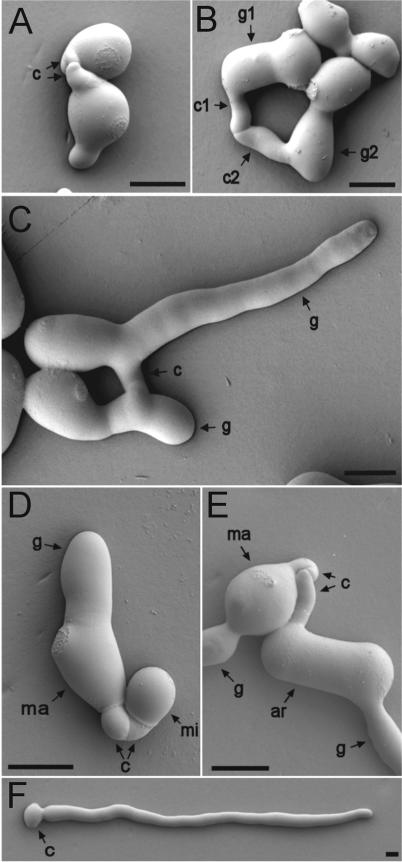FIG. 2.
(A to C) Different types of CATs. (A) CATs (c) produced directly from macroconidia. (B) A CAT (c1) produced directly from a germ tube tip (g1) and a CAT (c2) produced just behind a germ tube tip (g2). Note that the germ tubes have avoided each other, while the CATs have homed toward each other, are narrower, and have fused. (C) Fused CATs (c) originally produced as side branches of germ tubes (g). (D) CATs (c) produced by a macroconidium (ma) fused with one produced by a microconidium (mi). Note that the germ tube (g) produced by the macroconidium is much wider than the CATs. (E) CATs (c) produced by a macroconidium (ma) fused with one produced by an arthroconidium (ar). Both conidia have also produced wider germ tubes (g). (F) Solitary macroconidium (c) which has produced a germ tube but not a CAT (cf. with Fig. 1B). The conidial concentration in this preparation was lower (105 conidia per ml) than normal (106 conidia per ml). Images were obtained by low-temperature scanning electron microscopy. Bars, 5 μm.

